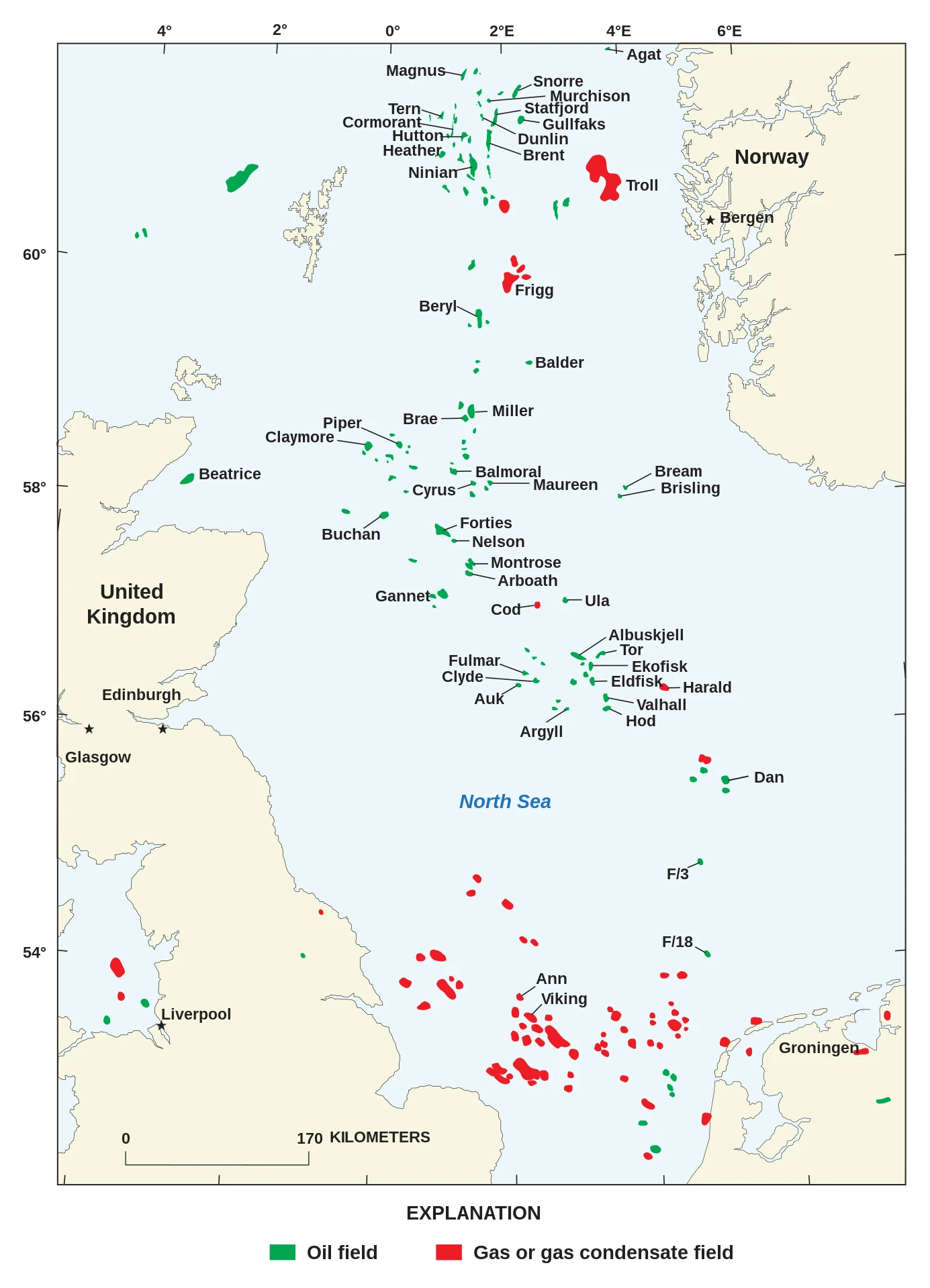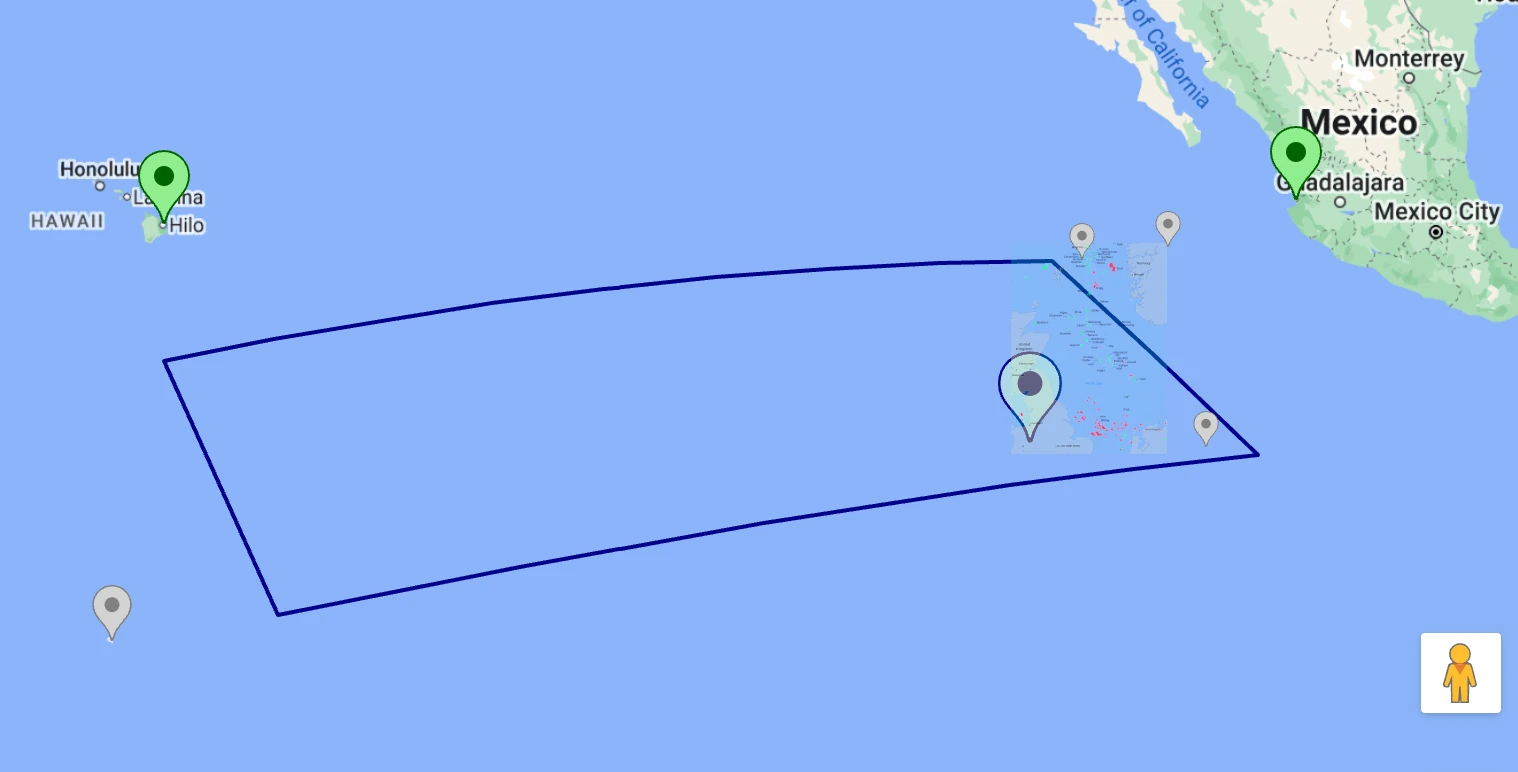Operations and Logistics in the Clarion-Clipperton Zone
The Clarion-Clipperton Zone is extremely remote and distant from almost all landmasses, ports and airports.
The CCZ is the blue polygon in the map below. The Metals Company's NORI-D license block is the large blue marker. Points of interest include the closest feasible commercial airports in Hawaii and Mexico (in green), potential nodule processing faciilities (in red), and the nearest islands (in grey).
Distances
These are various distances and flight/sailing times from TMC's NORI-D license block to relevent points of interest:
| Location |
Relevance |
Distance
|
Helicopter Flight Time
(@ 150knots) |
Ship Sailing Time
(@ 10knots) |
| Clipperton Atoll |
Closest land |
457nm |
3.0 hrs |
1.9 days |
| Clarion Island |
Alternate closest land |
488nm |
3.3 hrs |
2.0 days |
| Puerto Vallarta |
Closest international airport |
910nm |
N/A |
3.8 days |
| Hachinohe Port, Japan |
PAMCO's RKEF foundry |
5520nm |
N/A |
23 days |
| IMIP |
Large RKEF Facility |
7265nm |
N/A |
30 days |
Note: the Sikorsky S-92 (a widely used and operated offshore oil and gas helicopter) has an effective range of around 540nm, whilst the newer Airbus H-225 has an effective range of around 530nm. Consequently the majority of the CCZ is well beyond effective helicopter operational range.
Comparison to Offshore Oil & Gas Operations
Most offshore deepwater oil and gas operations occur at most around 150nm from the shore, and are almost entirely on the continental shelf. For example, oil and gas operations in the US Gulf of Mexico are all clustered relatively close to the US coast, and are at most 200nm offshore:

By comparison, NORI-D is more than twice this distance from the nearest land (Clipperton Atoll - 457nm - uninhabited) and more than five times this distance from the nearest meaningful airport (Puerto Vallarta - 910nm).
Comparison to North Sea Oil and Gas Operations
North Sea oil and gas operations stretch along the North Sea between the UK and Norway, from close to the Netherlands up to well beyond the Shetlands and Bergen:

Producing fields stretch from around 53°N to around 62°N, for a total North-South distance of around 550nm.
Operations are typically run out of Aberdeen in Scotland or Stavanger in Norway, with the Shetland Islands playing a key role in equipment, personnel and production transfers via Scatsta Airport and Sullom Voe terminal.
Personnel transfers to the Northern fields (e.g. Brent, Tern, Cormorant) typically involve a fixed-wing flight from Aberdeen airport to Scatsta Airport in the Shetlands of approximately 195nm (typical duration of 40-60 minutes) followed by helicopter transfer via Sikosrky S-92 to the installation itself (typically 80-150nm, with a flight duration of 30-70 minutes). This reduces costs associated with long helicopter flights, as well as increasing the speed of transfer.
An approximate scale comparison of North Sea oil and gas operations to the CCZ reveals the massive scale of the CCZ. North Sea oil and gas operations have approximately the same North-South distance, but the CCZ is many factors wider and more remote:

Logistics Challenges
The main issue for operating in the CCZ is the sheer distances involved. The vast distances create a number of complicating factors for operations:
- Most operations lie outside effective helicopter operating ranges
- Consequently typical helicopter transfers of personnel and equipment cannot be used
- This means that personnel and equipment transfers must be done via boat, which is far slower and riskier
- Health and medical issues become significantly harder to treat, as sick or injured personnel need to be transferred by boat to onshore medical facilities
- Sailing times are 3+ days, so transfers are very slow
- Consequently breakdowns become extremely expensive, as new or replacement components take 3+ days to arrive, and operations may need to but shut down during this period.